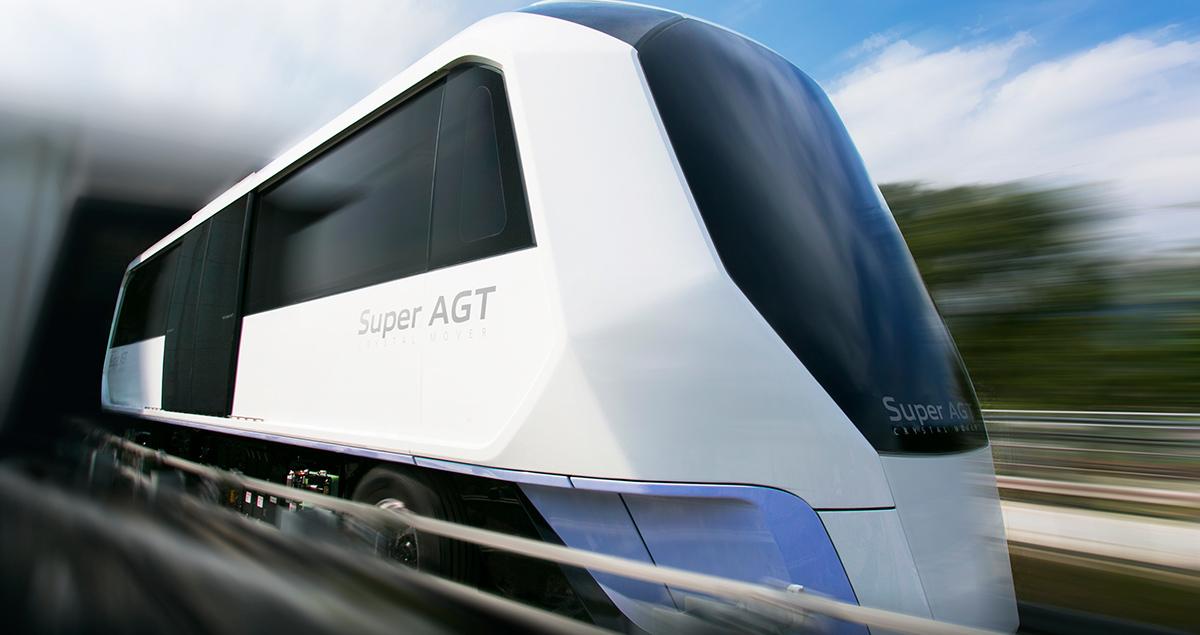3 Technologies Transforming the Future of Your Commute

When we think of the future of transport, we have a tendency to picture a world in which people fly around on personal jetpacks and cars drive down streets stacked several stories high with levitating traffic.
In reality, the way we get around, in the short and medium term at least, will be a little less sci-fi than that. But it will still involve some truly revolutionary changes.
Artificial intelligence, big data and smartphone connectivity are set to transform the urban transport experience, reducing congestion, speeding up journey times and allowing autonomous vehicles across our transport networks for the first time.
Smart transport
For a glimpse of what the future could look like, there aren’t many better places to start than Columbus, Ohio. Although the US city has a population of fewer than 800,000 people, it is hoping to be become one of the leading ‘smart transport’ cities in the word.
Driving this ambition is $40 million in federal funding, which Columbus won as part of the US government’s Smart City Challenge. The competition encourages cities to look at transforming their entire transit system rather than gradual evolution, which is the norm.
Within two years, Columbus should have autonomous shuttles driving around the commercial district, motion-sensitive streetlights and smart traffic signals that can help ease congestion. Residents should be able to pay for everything using a smartphone app that will charge them unified fees, regardless of how they have made their journey on public transport.
Globally, spending on smart transport is projected to reach nearly US$4 billion a year by 2020 as urban planning authorities turn to technology to help reduce many of the transport problems our rapidly expanding cities are experiencing. Some of the technology already exists, some is just around the corner and some may or may not happen at all.
Hyperloop
In terms of media hype, Hyperloop probably takes the number one spot. The ambitious dream of passenger pods travelling at speeds over 750mph inside giant tubes originally came from tech entrepreneur Elon Musk. He is not building it though, leaving it up to other private companies to develop the technology.
Hyperloop One hopes to have a test system up and running in 2017. The company says it is developing routes in five countries and expects to be carrying passengers by 2021. The idea that people could be carried from city to city at speeds faster than those attained by most passenger jets is certainly ambitious and will be revolutionary - if it works.
But while there is little doubt the technology can be made to work, there are still concerns about whether the human body would be able to stomach such a mode of transportation.
Automated Guideway Transit (AGT)
AGT, known as the ‘new transit’ system in Japan, is a fully automated system that first opened on the Kobe Port Island Line in 1981. It has since expanded to carry over 400,000 people a day across six lines including the Yurikamome Line and Nippori-Toneri Liner.
AGT use has spread around the world, with 25 lines operating in eight countries including Singapore and Taiwan. Mitsubishi Heavy Industries (MHI) supplied Singapore’s AGT system in 2003 for Sengkang New Town, and for Punggol New Town in 2005. AGT construction is currently underway in Macau ahead of a planned start of service in 2019.
The AGT system operates on mid-volume lines which serve 50,000 to 100,000 passengers daily. Vehicles are equipped with rubber tires which reduce noise and vibration, lowering impact on the surrounding environment. Since there is no driver, operation cost can be lowered.
As AGT can operate on steeper slopes (above 6%) and around tighter bends (with a minimum curve of 30 meters) than railed transport, the system offers very high flexibility in route planning for urban transit.
Now, a new high-speed AGT system developed by Mitsubishi Heavy Industries (MHI) has a maximum speed of 75mph, making the technology very well-suited for longer links such as high capacity urban transportation systems, including suburban lines. AGT can now offer a serious alternative to conventional rail.
The global market for rail transit systems is brisk and is thought to have an annual value of more than US$170 billion. The number of urban projects is increasing, particularly in emerging markets.
In tandem with economic development, emerging countries’ populations are concentrating in urban centres, stimulating demand for intra-city transportation. Growing numbers of automobiles are causing more traffic congestion, and exhaust gases are reducing environmental quality. The need to address social problems such as these is pressing, and high-speed AGT offers a very practical solution.
Telepresence
Another way of radically changing the way we commute? Removing the need to leave the home altogether. We have heard about the benefits of ‘telecommuting’ for years - working from home using the internet, email and phone. While this has brought significant benefits for many people by allowing more flexible working patterns, the fact is, when you telecommute, you miss out on much the office has to offer - not least the important relationships with colleagues that physical presence brings.
That’s what telepresence promises to change. At its simplest, this offers ‘robots’ which can be guided around the office from home and allow face to face interactions with others via video conferencing screens carried on the vehicle. Current versions of this have been described as an iPad being driven around on a Segway.
But the future holds much more. Researchers have already developed robots which, as well as allowing the user to see and hear remotely, allow them to experience haptics – interaction involving touch.
Professor Tachi of Japan’s Keio University has been working on telepresence robots since the 1980s. The TELESAR V telexistence robot avatar is his latest model. It can transmit sight, hearing and touch with users able to “feel” the shape and temperature of objects, thanks to sensors built into the robots’ hands.
As this technology advances, we can also expect to experience any smells the office has to offer. While that may or may not be an attractive prospect - depending on your office and colleagues - this multisensory experience will help bring together remote workers in a way which simply is not possible at the moment.
A smart future
The future of your commute is unlikely to lie in any one big invention. Instead it will grow out of many new innovations which can be used alongside existing technologies. The driverless AGT ‘train’ is already here, the Hyperloop is promised within a few years. But they will work within the context of increasingly smart transport networks that are able to respond quickly and efficiently to our ever-changing needs.





